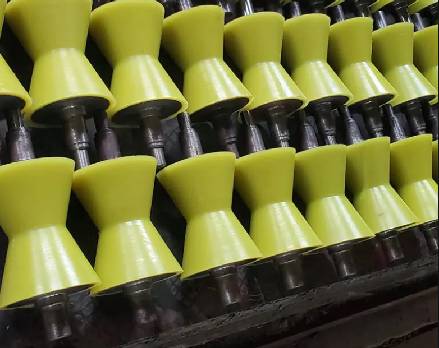 Afrikaans
Afrikaans  Albanian
Albanian  Amharic
Amharic  Arabic
Arabic  Armenian
Armenian  Azerbaijani
Azerbaijani  Basque
Basque  Belarusian
Belarusian  Bengali
Bengali  Bosnian
Bosnian  Bulgarian
Bulgarian  Catalan
Catalan  Cebuano
Cebuano  Corsican
Corsican  Croatian
Croatian  Czech
Czech  Danish
Danish  Dutch
Dutch  English
English  Esperanto
Esperanto  Estonian
Estonian  Finnish
Finnish  French
French  Frisian
Frisian  Galician
Galician  Georgian
Georgian  German
German  Greek
Greek  Gujarati
Gujarati  Haitian Creole
Haitian Creole  hausa
hausa  hawaiian
hawaiian  Hebrew
Hebrew  Hindi
Hindi  Miao
Miao  Hungarian
Hungarian  Icelandic
Icelandic  igbo
igbo  Indonesian
Indonesian  irish
irish  Italian
Italian  Japanese
Japanese  Javanese
Javanese  Kannada
Kannada  kazakh
kazakh  Khmer
Khmer  Rwandese
Rwandese  Korean
Korean  Kurdish
Kurdish  Kyrgyz
Kyrgyz  Lao
Lao  Latin
Latin  Latvian
Latvian  Lithuanian
Lithuanian  Luxembourgish
Luxembourgish  Macedonian
Macedonian  Malgashi
Malgashi  Malay
Malay  Malayalam
Malayalam  Maltese
Maltese  Maori
Maori  Marathi
Marathi  Mongolian
Mongolian  Myanmar
Myanmar  Nepali
Nepali  Norwegian
Norwegian  Norwegian
Norwegian  Occitan
Occitan  Pashto
Pashto  Persian
Persian  Polish
Polish  Portuguese
Portuguese  Punjabi
Punjabi  Romanian
Romanian  Russian
Russian  Samoan
Samoan  Scottish Gaelic
Scottish Gaelic  Serbian
Serbian  Sesotho
Sesotho  Shona
Shona  Sindhi
Sindhi  Sinhala
Sinhala  Slovak
Slovak  Slovenian
Slovenian  Somali
Somali  Spanish
Spanish  Sundanese
Sundanese  Swahili
Swahili  Swedish
Swedish  Tagalog
Tagalog  Tajik
Tajik  Tamil
Tamil  Tatar
Tatar  Telugu
Telugu  Thai
Thai  Turkish
Turkish  Turkmen
Turkmen  Ukrainian
Ukrainian  Urdu
Urdu  Uighur
Uighur  Uzbek
Uzbek  Vietnamese
Vietnamese  Welsh
Welsh  Bantu
Bantu  Yiddish
Yiddish  Yoruba
Yoruba  Zulu
Zulu Understanding the Functions of Bend and Snub Pulleys in Mechanical Systems
Understanding Bend and Snub Pulleys Functions and Applications in Mechanical Systems
Pulleys are fundamental components in mechanical systems, widely used in various applications to transmit power and change direction of force. Among the different types of pulleys, bend and snub pulleys are particularly significant for their unique roles in enhancing system efficiency and facilitating smooth operation. This article will delve into the definitions, functions, and applications of bend and snub pulleys, shedding light on their importance in engineering and industry.
Definitions and Characteristics
A bend pulley, often referred to as a bend shaft or bending pulley, is designed to guide and change the direction of a belt or rope without causing excess wear. It generally features a larger diameter and is used in situations where belts need to navigate through various angles or curves. The fundamental function of the bend pulley is to align the belt correctly and to maintain proper tension throughout the system.
In contrast, a snub pulley is smaller and serves as an auxiliary pulley that provides extra tension to a belt drive system. It is usually positioned to guide and redirect the belt while preventing slippage and ensuring proper tensioning. Snub pulleys are critical in extending the lifespan of belts by minimizing wear due to friction and misalignment. They are often installed at strategic points in a conveyor system or alongside drive pulleys to enhance the efficiency of power transmission.
Functions and Benefits
The functions of bend and snub pulleys are integral to the overall performance of mechanical systems. Here are some key benefits associated with these pulleys
1. Direction Control Bend pulleys allow for the redirection of belts, facilitating the movement of materials or forces at various angles. This is particularly useful in conveyor systems, where goods must travel through complex pathways.
2. Tension Management Snub pulleys play a crucial role in maintaining belt tension. Proper tension ensures optimal contact between the pulley and the belt, which in turn minimizes slippage and increases the system's efficiency.
3. Wear Reduction By guiding the belts with minimal friction and alignment issues, both bend and snub pulleys help reduce wear and tear on the belts. This contributes to longer service life and lower maintenance costs.
4. Load Distribution In larger machinery, multiple pulleys can effectively distribute loads, allowing systems to operate smoothly under heavy weights. Bend and snub pulleys assist in balancing loads across different parts of the setup.
bend pulley and snub pulley

5. Space Efficiency Bend pulleys help design compact systems by enabling bend angles that can save space, which is particularly essential in industries where equipment size is a constraint.
Applications in Industry
Bend and snub pulleys are employed across numerous industries, from manufacturing to transportation. Some common applications include
- Conveyor Systems These pulleys are prevalent in conveyor belts used in warehouses, manufacturing plants, and airports, where materials and luggage must be directed and moved efficiently.
- Mining Operations In mining, bend and snub pulleys are critical for the movement of extracted materials through conveyor systems, ensuring robustness and reliability in harsh environments.
- Textile Manufacturing The textile industry uses these pulleys to manage the movement of fabrics through various processing machines, enhancing production lines.
- Power Transmission In power transmission systems, bend and snub pulleys help in managing the belts that connect engines to machinery, ensuring optimal functionality in vehicles and industrial equipment.
Conclusion
Bend and snub pulleys are essential components in mechanical systems, contributing significantly to the efficiency and longevity of operations in diverse industries. Their ability to control direction, manage tension, and reduce wear makes them invaluable in applications ranging from conveyors to industrial machinery. As technology advances and industries evolve, the importance of these pulleys will continue to grow, solidifying their place in modern engineering.
By understanding their functions and applications, engineers and technicians can better design and maintain systems that are not only effective but also resource-efficient, paving the way for innovations in machinery and industrial processes.
-
Revolutionizing Conveyor Reliability with Advanced Rubber Lagging PulleysNewsJul.22,2025
-
Powering Precision and Durability with Expert Manufacturers of Conveyor ComponentsNewsJul.22,2025
-
Optimizing Conveyor Systems with Advanced Conveyor AccessoriesNewsJul.22,2025
-
Maximize Conveyor Efficiency with Quality Conveyor Idler PulleysNewsJul.22,2025
-
Future-Proof Your Conveyor System with High-Performance Polyurethane RollerNewsJul.22,2025
-
Driving Efficiency Forward with Quality Idlers and RollersNewsJul.22,2025





























